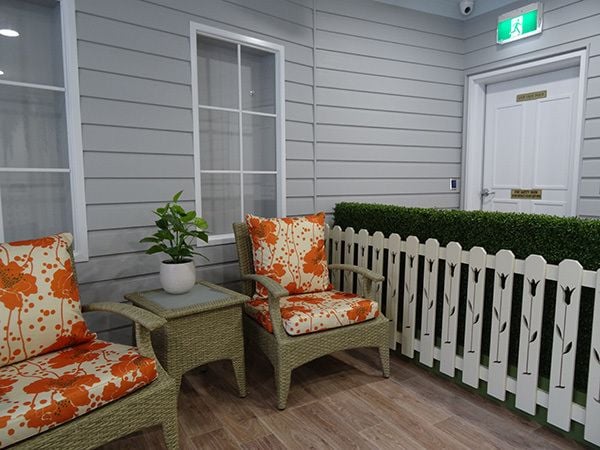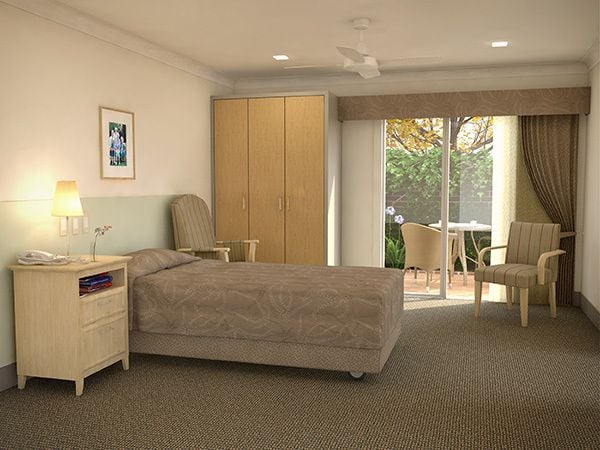Inviting the outdoors in - in Aged Care Residential Living
)
Enjoying the great outdoors has always been part of Australian culture. But for people living in aged care homes, particularly those residing in homes located in high-density urban areas or memory support units, access to gardens and communal outdoor areas isn't always easy, practical or safe. This can cause residents to feel socially isolated and despondent, which in turn makes caring for them more challenging.
We have created a solution to this problem by designing spaces that blur the lines between the great outdoors and the internal environment. And the results in terms of improved emotional and psychological wellbeing have been well documented.
Firstly, let's examine why the challenge of incorporating outdoor spaces exists in some residential aged care settings. With an increasing number of aged care homes today being constructed to occupy multi-storey buildings in city and metropolitan locations, residents of these homes may not have direct access to gardens, outdoor common areas and walkways. It can be daunting (and unsafe in some cases) for those residents to navigate their way through the building to the ground floor away from the comfort of staff and fellow friends within their community. Furthermore, balconies in these vertical homes are generally very compact and designed to be weatherproof, reducing the opportunity for plants to thrive in those locations. As a result, these 'outdoor' spaces commonly lack the welcoming ambience to become an alfresco sitting room destination for residents.
Aged care residents are also commonly sensitive to direct sunlight, extremes in temperature and drafts, making it unappealing to venture outdoors, even when access is relatively easy. Fear of social isolation is another deterrent for some residents to venture outdoors, as is the shortage of staff in some care homes, making it challenging to accompany residents outdoors.
Last but not least, there is the challenge in memory support units of security and safety. For many residents with dementia, Alzheimer's disease and other cognitive impairments, venturing outdoors is not recommended. Some memory support units are built without any direct outdoor access for residents for this reason.
A compromise when faced with these challenges is to create internal spaces that provide the sensation for residents that they have ventured outdoors. The benefits are that they can enjoy a garden-like sanctuary without any environmental fluctuations and with the assurance and comfort of being close to staff and other residents. For instance we have designed and created indoor home-like gardens and terracesinunder-utilised lounge room spaces within high dependency memory support units to provide residents with a real sense of being outdoors. The added benefits for our clients in these cases was that our concept breathed new life into previously under-utilised spaces, created a welcoming space for visiting ones and made caring for residents easier on staff because the outdoor room provided residents with a new sensory experience to enjoy.
| Tags:Residential Aged CareAged Care Interior Design |

)
)
)
